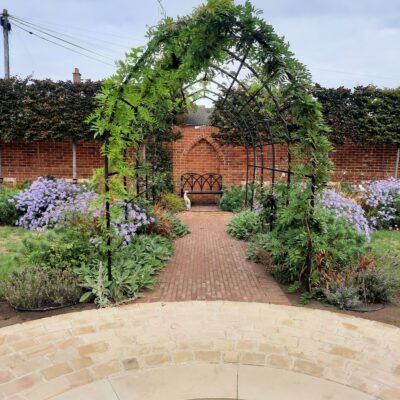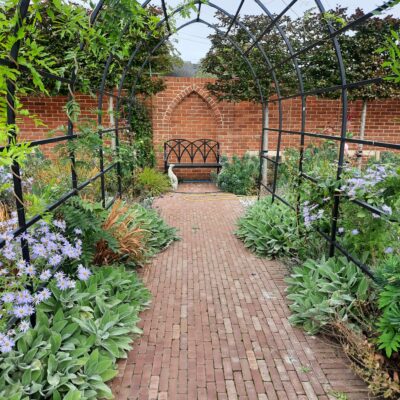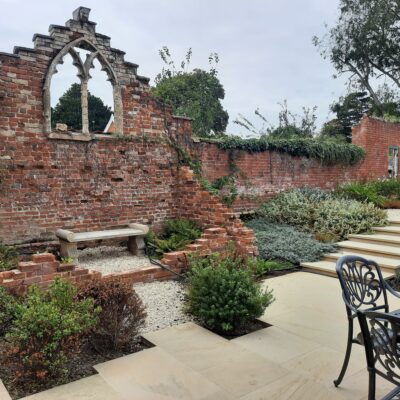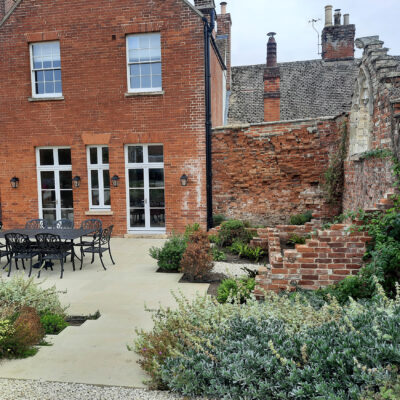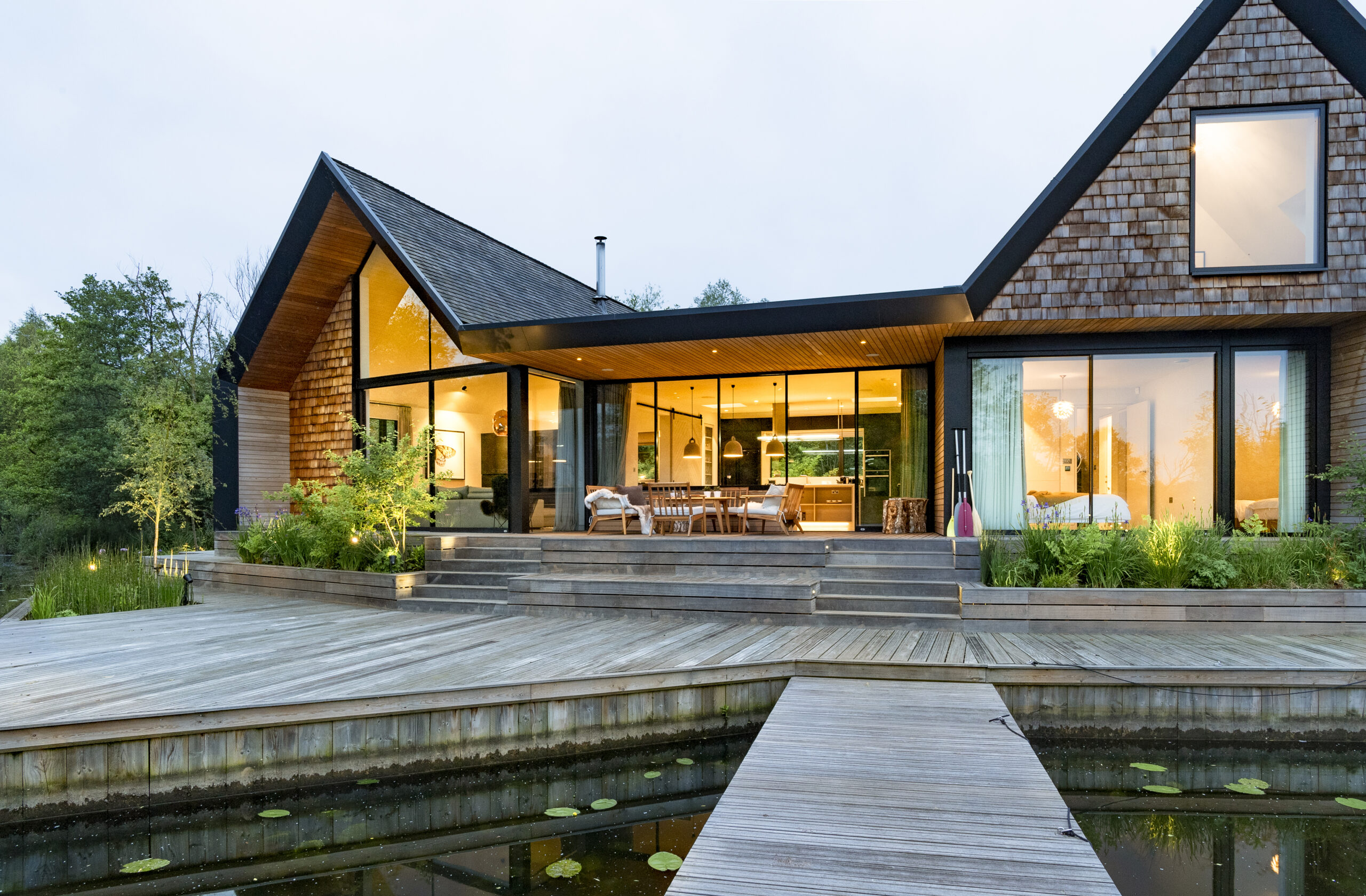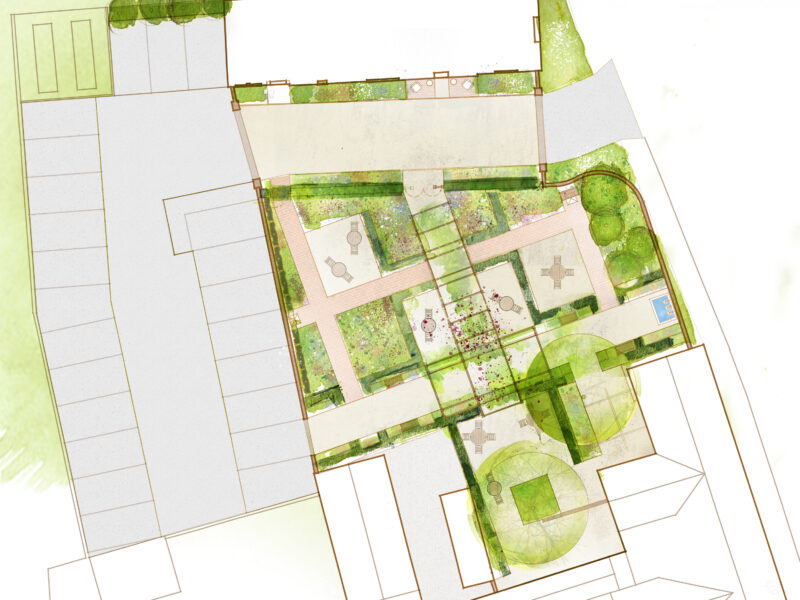The Chantry, Suffolk
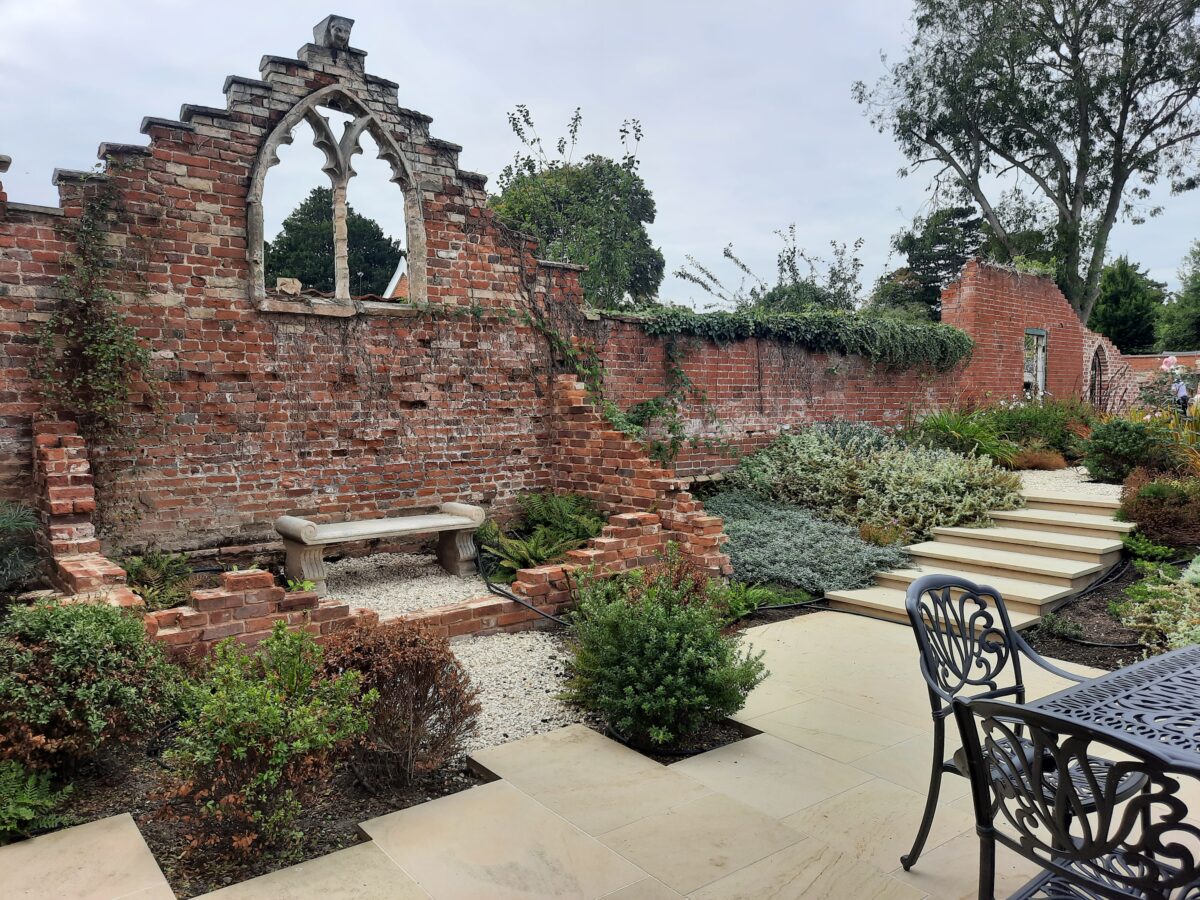
Restoring Elegance: The Chantry – A Suffolk Townhouse Garden Design Project
The Chantry, one of Saxmundham’s most cherished and historically significant town houses, reflects both timeless beauty and architectural grace. The dedicated owners, who have meticulously restored this classical Victorian townhouse to its former glory while preserving its original features, have truly embraced their role as custodians of history. Their commitment to the local community led them to engage the services of Tom, to redesign this Suffolk townhouse garden in a project that would honour the heritage of The Chantry and embrace the natural charm of the region. The owners envisioned a garden that seamlessly blended formal and wild elements, in harmony with the classical architecture and the local flora. Importantly, the brief emphasised the use of local materials, plants, and trades, which was a seamless endeavour in the picturesque landscape of East Anglia.
Historical Significance: The Chantry holds a special place in Saxmundham’s history, serving as a classical Victorian townhouse originally built as a country residence for a gentleman and housing the town’s doctor’s surgery for many years. Over the years, this remarkable structure has witnessed changes in the landscape and architecture, yet the current owners have committed themselves to restoring it to its former glory. Their dedication is a testament to their reverence for the past and their role as stewards of history.
The Brief
The owners of The Chantry, in their admirable restoration efforts, set their sights on not only reviving the house but also creating an outdoor space that honours the property’s heritage. Their vision was for Tom to design a garden that juxtaposes formality and wildness, capturing the essence of both classical architecture and the natural surroundings. The goal was to create a townhouse garden that not only respects history but also coexists harmoniously with nature.
A distinctive aspect of this project was the strong desire to use local resources. From materials to plants and trades, the emphasis was on sourcing everything locally. Fortunately, East Anglia’s abundant resources and skilled artisans made this goal readily achievable. This commitment to local sourcing not only adds to the project’s authenticity but also contributes to the regional economy.
Garden Elements
The garden design for The Chantry incorporated a blend of traditional and contemporary elements, reflecting the client’s vision while respecting the historical significance of the property.
A classic touch was to introduce a rose garden at the front of the restored house to pay homage to the formal, classical aesthetic. This elegant space, with carefully chosen rose varieties from Peter Beales, adds an air of romance and beauty to the property.
The gravel garden at the rear of The Chantry blends classic and contemporary design. Its simplicity and low maintenance makes it an ideal complement to the classical architecture. A standout feature in the garden is the faux-ruin, which serves as a linking element to the marvellous old mullion window in the party wall.
The heart of the project lies in the creation of formal and wild gardens, representing the duality of classical and naturalistic design. These areas showcase a rich tapestry of plants, from structured and neat to wild and ecological, reflecting the desired harmony.
This Suffolk townhouse garden design project is a remarkable journey that weaves together history, classical architecture, and the charm of the Suffolk region. The owners’ commitment to restoration and the embrace of local resources exemplify their dedication to preserving the legacy of this magnificent property. By collaborating with Tom and emphasising the coexistence of formal and wild elements, this garden design project celebrates the grandeur of The Chantry and the natural beauty of Suffolk. It is a tribute to the past and a testament to the region’s rich heritage.
Photography by Anne Green Armytage
